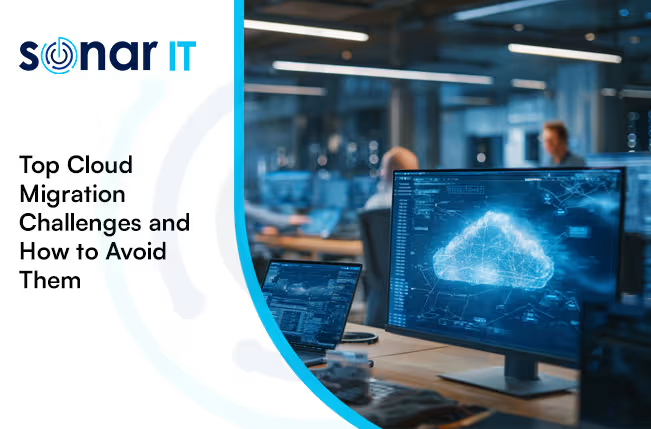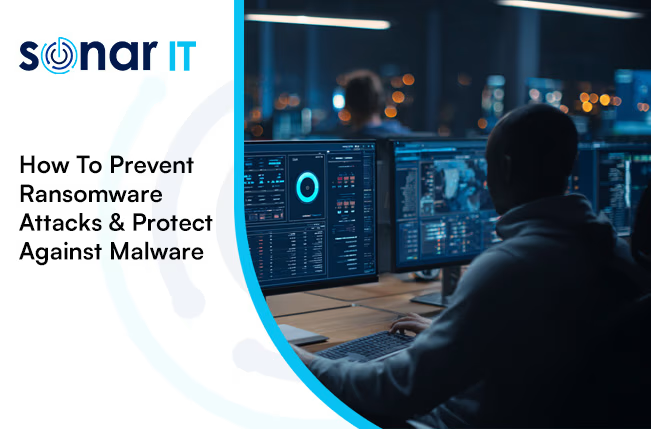Top Cybersecurity Trends 2025: AI, Cyber Threats & Resilience
Cybersecurity in 2025 is shaping up to be more complex and fast-moving than ever. With AI-powered threats, evolving cybercriminal tactics, and increased cloud adoption, businesses must stay ahead of the curve. This blog explores the top cybersecurity trends 2025, including how generative AI, threat intelligence, and cyber resilience are reshaping the threat landscape. You'll also learn practical strategies to manage threats and strengthen your security posture.
Understanding the top cybersecurity trends 2025
The cybersecurity landscape is shifting rapidly. Businesses are facing more sophisticated cyberattacks, often powered by AI and automation. As we move into 2025, the focus is not just on preventing breaches but also on building resilience and responding quickly to incidents.
Cybercriminals are using generative AI to create more convincing phishing emails and social engineering tactics. At the same time, organisations are adopting AI-driven tools to detect vulnerabilities and stop threats before damage is done. The balance of power is changing, and staying informed is key.

Key shifts shaping cybersecurity in 2025
The following trends are driving major changes in how businesses approach cybersecurity. These shifts reflect both new technologies and evolving threat tactics.
Trend #1: AI is both a threat and a defence tool
AI is being used by both attackers and defenders. Cybercriminals use AI to automate attacks, while security teams use it to detect anomalies faster. The challenge is staying ahead of AI-powered threats.
Trend #2: Generative AI is fuelling social engineering
Generative AI tools can create realistic fake content, making phishing and impersonation attacks harder to spot. Businesses need to train staff and use email security tools that detect these tactics.
Trend #3: Threat intelligence is becoming real-time
Real-time threat intelligence helps organisations respond faster to emerging threats. This includes sharing data across industries to identify new attack patterns early.
Trend #4: Cyber resilience is the new priority
Prevention alone isn’t enough. Companies are focusing on resilience—how quickly they can recover from a cyber incident. This includes backup systems, response plans, and regular testing.
Trend #5: Supply chain attacks are on the rise
Attackers are targeting third-party vendors to gain access to larger networks. Businesses must assess the security posture of their suppliers and partners.
Trend #6: Cloud adoption is increasing risk exposure
As more data moves to the cloud, misconfigured settings and weak credentials become common vulnerabilities. Security strategies must include cloud-specific protections.
Trend #7: Regulatory pressure is increasing
Governments are introducing stricter rules around data protection and breach reporting. Non-compliance can lead to fines and reputational damage.
Essential features of modern cybersecurity strategies
To stay secure in 2025, your cybersecurity approach should include:
- AI-powered detection tools that identify threats in real time
- Regular vulnerability assessments across all systems
- Staff training to reduce phishing and social engineering risks
- Incident response plans tested at least twice a year
- Secure cloud configurations and access controls
- Third-party risk assessments for all vendors

Why resilience matters more than ever
Cyber resilience is no longer optional. With the rise in ransomware attacks and data breaches, businesses must plan for when—not if—a cyber incident occurs. This means having systems in place to detect, respond, and recover quickly.
Resilience strategies include maintaining offline backups, using multi-factor authentication, and having a clear communication plan for stakeholders. These steps reduce downtime and protect your reputation.
Practical cybersecurity strategies for 2025
To stay ahead of evolving threats, businesses need to adopt a layered approach. Below are key strategies that align with the top cybersecurity trends 2025.
Strategy #1: Use AI-powered threat detection
AI tools can analyse large volumes of data to spot unusual behaviour. This helps detect threats that traditional tools might miss.
Strategy #2: Implement zero trust architecture
Zero trust means no user or device is trusted by default. Every access request is verified, reducing the risk of internal threats.
Strategy #3: Train employees on phishing and social engineering
Human error is still a major cause of breaches. Regular training helps staff recognise and report suspicious activity.
Strategy #4: Monitor your supply chain
Know who you’re working with. Assess the cybersecurity practices of your vendors and partners to avoid indirect attacks.
Strategy #5: Encrypt sensitive data
Whether stored or in transit, encryption protects data from being read if stolen. This is especially important for cloud environments.
Strategy #6: Test your incident response plan
A plan is only useful if it works. Run simulations to find gaps and improve your response time.
Strategy #7: Keep software and systems updated
Outdated software is a common entry point for attackers. Regular updates close known vulnerabilities.

Best practices for implementing cybersecurity in 2025
Putting these strategies into action requires planning and consistency. Here’s how to make cybersecurity part of your business operations.
Start by assessing your current posture. Identify gaps in your defences and prioritise fixes based on risk. Then, invest in tools that support automation and real-time monitoring. Finally, build a culture of security by involving every department—not just IT.
Work with partners who understand your industry and can help you stay compliant with changing regulations. Cybersecurity is not a one-time project but an ongoing process.
Best practices for staying secure in 2025
Follow these practices to stay ahead of threats:
- Review and update your cybersecurity policies every 6–12 months
- Use multi-factor authentication for all critical systems
- Limit access based on job roles and responsibilities
- Back up data regularly and store copies offline
- Monitor logs and alerts for unusual activity
- Work with trusted security providers for expert support
Staying secure requires constant attention, but these steps help reduce your risk.

How Sonar IT can help with top cybersecurity trends 2025
Are you a business managing 15–40 endpoints and looking to stay ahead of cyber threats? If you're growing and need reliable systems to protect your data, it's time to rethink your cybersecurity strategy.
At Sonar IT, we help businesses implement practical, AI-powered solutions tailored to their needs. Whether you're concerned about phishing, ransomware, or cloud security, our team is here to support you. Contact us today to see how we can help you prepare for the top cybersecurity trends of 2025.
Frequently asked questions
What are the biggest cyber threats businesses face in 2025?
Businesses in 2025 face threats like ransomware, phishing, and social engineering. These attacks are becoming more advanced, often using AI to bypass traditional defences. Cybercriminals are also targeting cloud platforms and third-party vendors, increasing the risk of data breaches.
To protect your organisation, focus on cyber resilience and threat intelligence. Regular training, updated systems, and strong access controls are essential. Being proactive helps reduce the impact of a cyber incident.
How does generative AI affect cybersecurity strategies?
Generative AI is changing how attackers create content, making phishing emails and fake websites more convincing. This makes it harder for users to spot scams. Businesses must update their cybersecurity strategies to include tools that detect AI-generated content.
Using AI-powered detection systems helps identify suspicious behaviour early. Training staff to question unexpected messages also reduces risk. Staying informed about the latest trends in cybersecurity is key.
Why is cyber resilience more important than prevention alone?
Prevention is important, but no system is perfect. Cyber resilience focuses on how well your business can recover from a cyberattack. This includes having backups, response plans, and communication strategies.
With the rise of ransomware attacks and data breaches, resilience helps reduce downtime and protect your reputation. It’s a practical way to manage cyber risks in an unpredictable threat landscape.
What role does threat intelligence play in managing cyber risks?
Threat intelligence helps you understand current and emerging threats. It includes data about threat actors, attack methods, and vulnerabilities. This information allows you to adjust your defences in real time.
By using threat intelligence, businesses can detect attacks earlier and respond faster. It also supports better decision-making and helps prioritise security investments. It’s a key part of any modern cybersecurity strategy.
How can businesses secure their supply chain from cyberattacks?
Supply chain attacks are increasing because attackers target weaker links. Businesses must assess the cybersecurity posture of their vendors and partners. This includes reviewing their policies, access controls, and incident response plans.
Using contracts that require minimum security standards helps reduce risk. Regular audits and monitoring also ensure compliance. Protecting your supply chain is essential for overall cyber security.
What are the benefits of using AI-powered security software?
AI-powered security software can detect threats faster than traditional tools. It analyses patterns and behaviours to find anomalies, even in large data sets. This helps stop attacks before they cause damage.
These tools also reduce the workload on IT teams by automating routine tasks. As cyber threats become more complex, AI-driven tools are essential for staying ahead. They support a proactive approach to cybersecurity.
.svg)
%20(1)%20(2)%20(1).webp)






